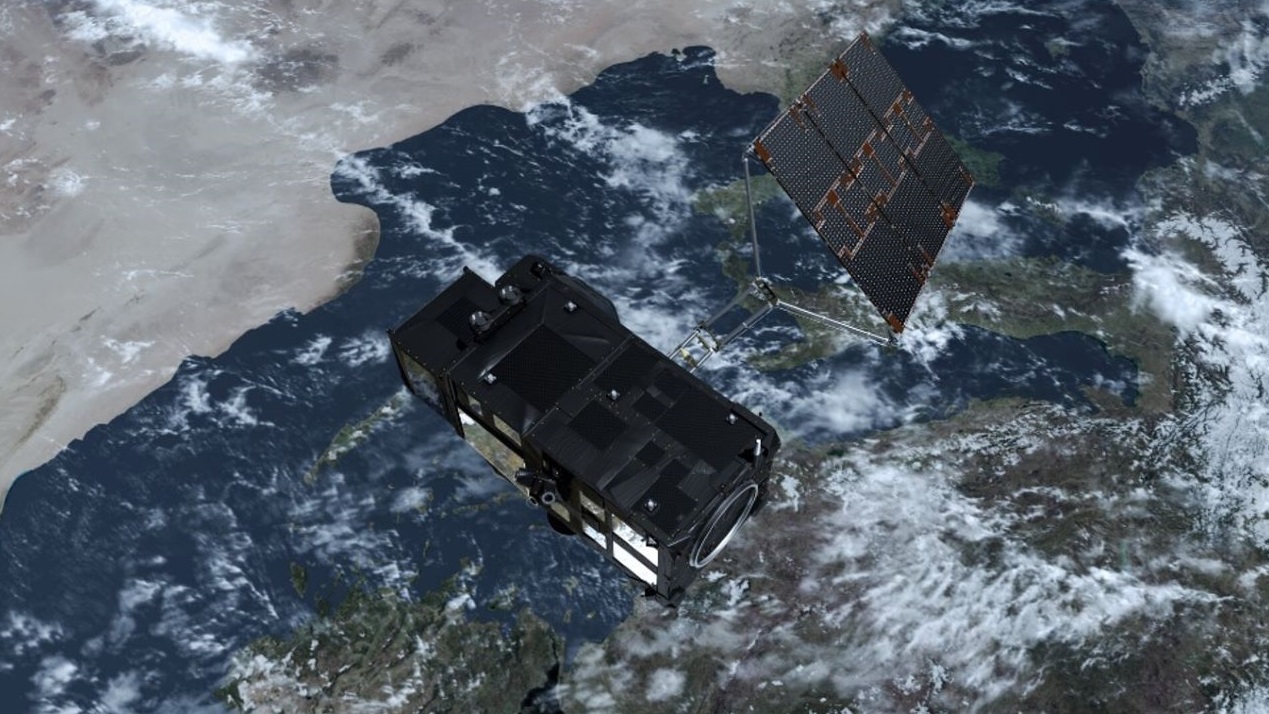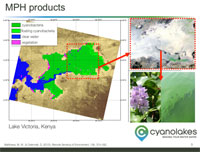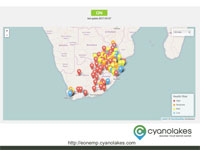Monitoring large, remote bodies of water is logistically challenging, time consuming and expensive. Responding quickly to events that pose a risk to human health has been almost impossible, given the size of some lakes and seas. An innovative satellite data service is now able to change things around.
Based on satellite remote-sensing, CyanoLakes RealTime is an online monitoring and mapping service, designed by leading specialist scientists at CyanoLakes (Pty) Ltd. It significantly improves water and health authorities' ability to monitor, respond to and manage cyanobacteria, algal blooms and water weeds in both fresh and salt waters.
Cyanobacteria blooms pose a serious health threat to humans and animals and are increasingly common due to pollution and a warming climate. Eutrophication can devastate natural ecosystems and increases the cost of water treatment.
In October 2014, Mark Matthews won the Copernicus Masters Ideas Challenge for applications using satellites. He developed an algorithm able to distinguish between cyanobacteria and algae, which was recognised as a breakthrough in research and innovation, and also solved many of the challenges associated with using satellite data for routine monitoring applications.
With his new algorithm, Dr Matthews envisaged an online information service providing daily warnings on the health risks from cyanobacteria blooms. This would allow water and health authorities an unprecedented ability to monitor in near-real time for cyanobacteria and algal blooms, ultimately protecting the general public from this kind of pollution.
In 2015, after being awarded with a research grant by the Water Research Commission, CyanoLakes (Pty) Ltd began working on a prototype for South Africa.
The South African Department of Water and Sanitation became the first user of the prototype, using the information to fill gaps in their monitoring database and for reporting.
In January 2017, following the public release of data from the Copernicus Sentinel-3 satellite, the prototype started to be used in near real-time operations, enabling a variety of solutions for many fields.
These applications included filling information gaps in data-poor regions for water scientists and engineers, improving the safety of water sport events, providing aquaculture operators with warnings of harmful algal blooms to reduce economic losses, and wide-scale monitoring and mapping of cyanobacteria blooms and eutrophication for water and health authorities.
The Ocean and Land Colour Instrument on Sentinel-3A is currently the only sensor in space with the necessary spectral bands, radiometric sensitivity, spatial resolution and coverage for near real-time services related to the detection of cyanobacteria.
Using the prototype service, the Department of Water and Sanitation was able to monitor the massive outbreak of the invasive water hyacinth at Hartbeespoort dam, which occurred during 2016–17.
Dr Matthews said, "Sentinel-3 is the backbone of the CyanoLakes RealTime service, given its unique instrument characteristics. Without it, we could not provide our service to the market. We are excited about the launch of Sentinel-3B in 2018 because it will allow us to provide an even better service, with daily updates to clients anywhere around the globe."
About the Sentinels
The Sentinels are a fleet of dedicated EU-owned satellites, designed to deliver the wealth of data and imagery that are central to Europe's Copernicus environmental programme.
In partnership with EU Member States, the European Commission leads and coordinates this programme, to improve the management of the environment, safeguarding lives every day. ESA is in charge of the space component, responsible for developing the family of Copernicus Sentinel satellites and ensuring the flow of data for the Copernicus services, while the operations of the Sentinels have been entrusted to ESA and EUMETSAT.




